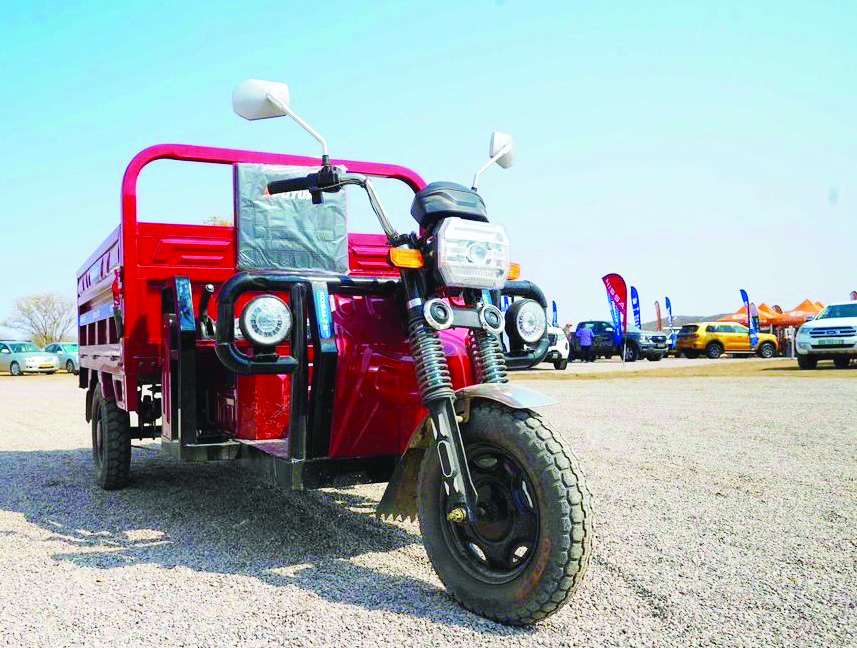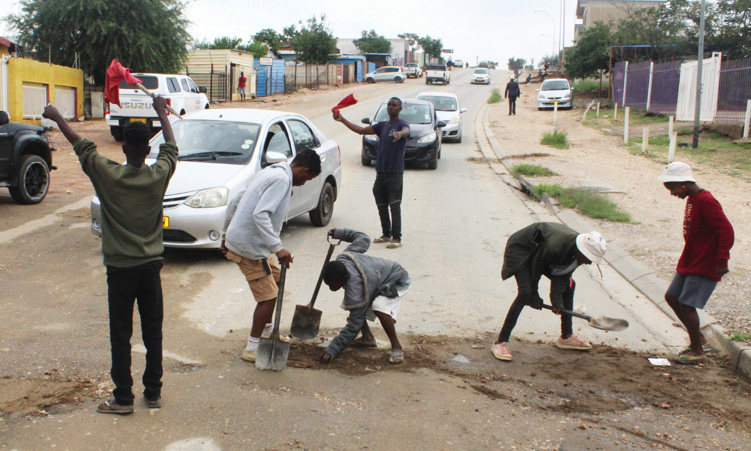• FRANCOIS LOTTERING
WITH the rising cost of fuel and basic farm vehicles one man decided to look further for a viable and economical solution for small transport operations.
Top Revs this past weekend visited the Outjo Wildsfees, where Nicolo Benade assembled and distributed three-wheeler electric vehicles.
He offered Top Revs the chance to drive and experience this mode of transport first-hand to see what the hype is all about.
A bit like a plug-and-play device, a three-wheeler only needs to be plugged in at a normal AC 220V plug and needs between six and eight hours to fully charge.
Benade says when fully charged the vehicle is able to travel about 120km under normal driving conditions, and at the current electricity prices it would cost under N$10 to travel 100km.
Considering that these three-wheelers are designed to be used on farms and most likely most of Namibia’s farmlands are in rocky or sandy areas, they come standard with a diff lock.
Upon testing out the three-wheeler on a sandy road, the diff-lock was engaged and the vehicle did what it was designed to do – to conquer the terrain.
It can reach a top speed of 85km/h, but is limited to 65km/h for safety reasons.
“We assemble the vehicles in Windhoek, but we deliver nationwide,” Benade says.
The vehicle comes standard with three drop sides and can be converted into a ‘flatbed’ for bigger loads.
The load capacity is 500kg (half a tonne), but it can handle up to a tonne.
This is, however, not advisable for safety reasons.
The applications are endless.
Benade says it is the ideal vehicle for warehouses, mining operations, construction sites and even agricultural purposes.
Though the vehicle is not approved to be used on public roads yet, Benade says he and his team are hard at work with the relevant authorities to clear it for normal road use.
The vehicle comes standard with indicators, side mirrors, hooter, headlights, a frontal safety frame, an odometer and a charge indicator.
All of this is within reach of the driver without taking his hands off the steering handles.
The vehicles are currently only available in red, Benade says.
He says the manufacturer also offers other versions of the vehicle, among them a small ambulance which is ideal for rural areas.
The vehicle comes standard with a charger which is safely stored in a loading box under the seat.
Stay informed with The Namibian – your source for credible journalism. Get in-depth reporting and opinions for
only N$85 a month. Invest in journalism, invest in democracy –
Subscribe Now!










